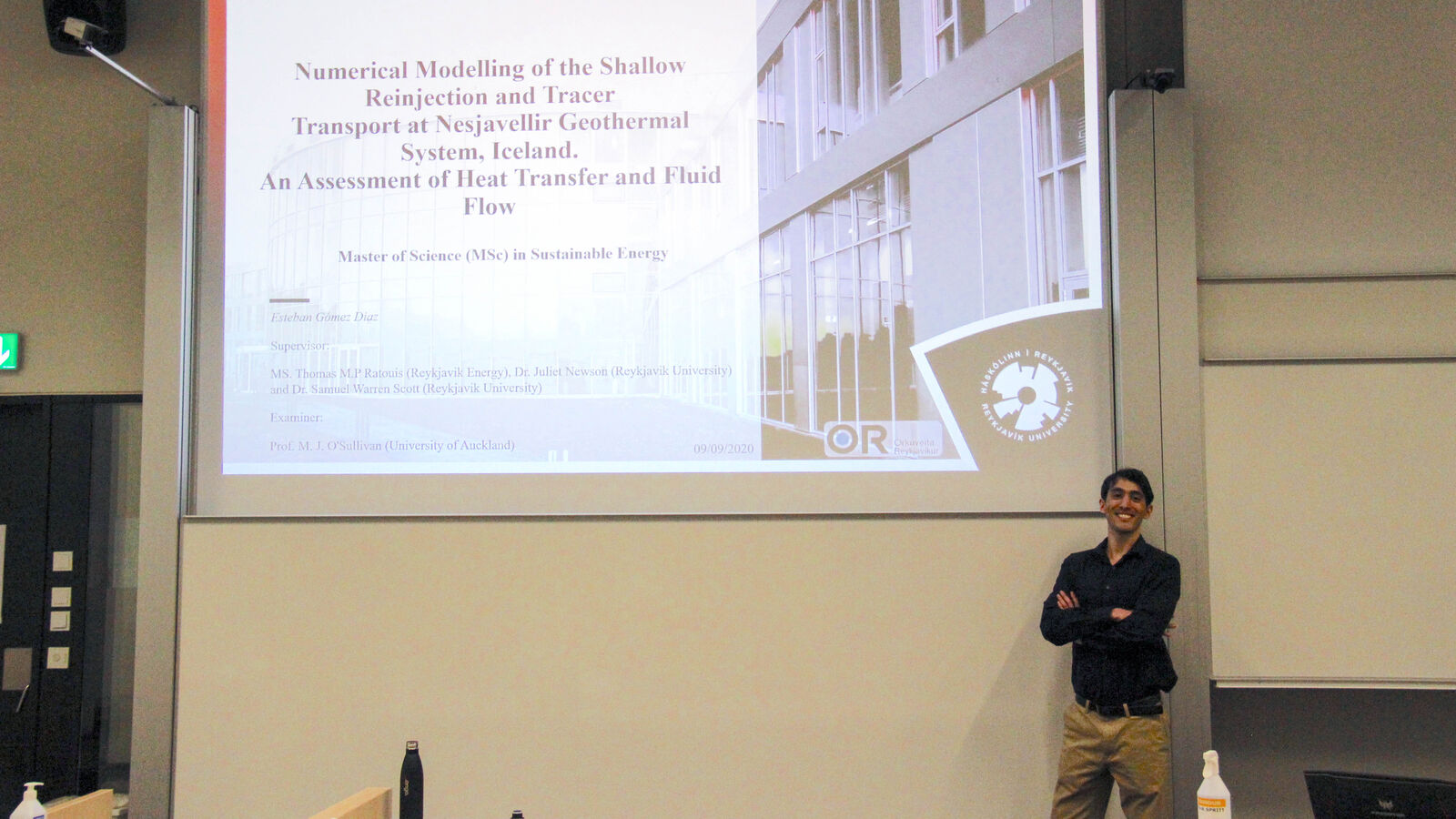MSc Thesis: Numerical Modelling of the Shallow Reinjection and Tracer Transport at Nesjavellir Geothermal System, Iceland. An Assessment of Heat Transfer and Fluid Flow
REYKJAVIK, September 09 - MSc in Sustainable Energy candidate, Esteban Gomez, successfully defended his master's thesis where he performed numerical modelling of the shallow reinjection and tracer transport at the Nesjavellir Geothermal System, in Iceland. Through this, he made an assessment of the heat transfer and fluid flow of the area. Esteban's research was supervised by Juliet Newson and Samuel Warren Scott from Reykjavik University, as well as Thomas M.P. Ratouis from Orkuveita Reykjavíkur ( Reykjavik Energy ).

Setting the context for his research, Esteban shares that the Nesjavellir geothermal power plant is the second largest in Iceland, with a district heating capacity of 300 MW and electrical generation of 120 MW. Esteban explains that reinjection of the excess water from the Nesjavellir geothermal plant derived from separated water from high enthalpy wells and condensed steam has affected the temperature of the shallow groundwater in the area. These discharges of warm water present a risk to cold water production for the power plant as well as the ecosystem in Lake Thingvellir, which is a UNESCO World Heritage Site.
Esteban's research investigates the flow path of reinjected liquid and temperature of impacted groundwater for a better management of the discharge and injection in the area. Esteban developed a numerical model of the Nesjavellir warm wastewater reinjection zone using the TOUGH2 non isothermal flow simulator program and incorporated a 3D geological model developed with Leapfrog Geothermal modelling software. His model was calibrated against underground water temperature data measured between 1998 - 2018 from several monitoring stations located to the north of the power plant. Esteban further calibrated hydrological parameters such as porosity and permeability against data from a tracer test carried out in the area between 2018-2019.
Both of his models used the Multiple Interactive Continuum (MINC) method, which is a generalisation of the dual-porosity method. Compared to the single-porosity model, Esteban found that the MINC method better replicated the fast and strong recovery of tracers found in the monitoring stations. His temperature model showed acceptable results that match the temperature field. While Esteban's tracer model closely matched the overall tracer return in some wells, his model underestimated tracer returns in others. His model did however reproduce the overall trend, with similar tracer arrival and concentration peaks for monitoring stations located over main structures acting as permeable channels.
Esteban took his research further, and simulated two future scenarios for a period of 20 years, one in which injection continues and another in which the injection is completely stopped. Esteban's numerical model in this study improved understanding of the connections between injection wells and monitoring stations, and provided better characterisation of the fracture matrix interface and the porosity of post-glacial lava flows. Esteban believes it can therefore be useful in providing a basis for sustainable management of the geothermal resource and the surrounding environment.
Congratulations Esteban for an excellent thesis defence!
